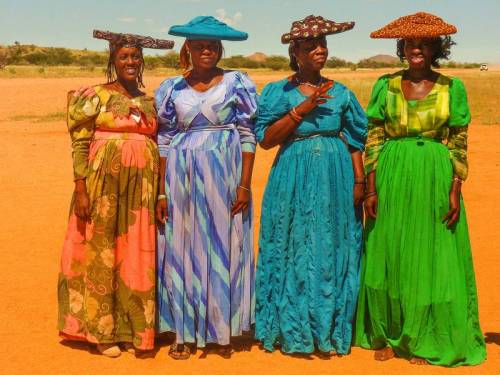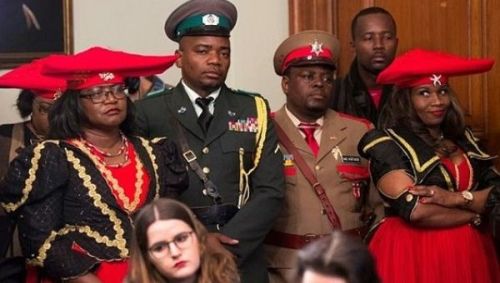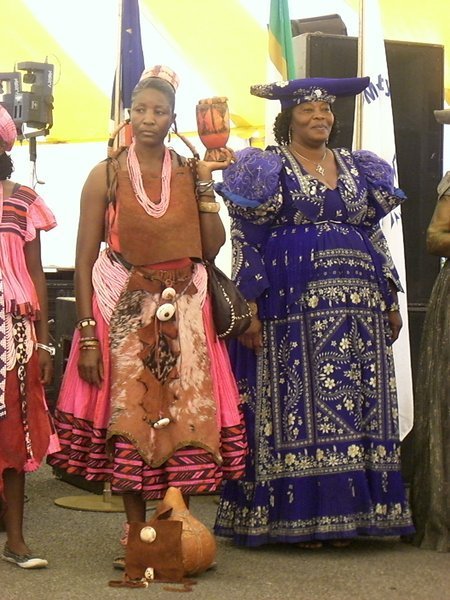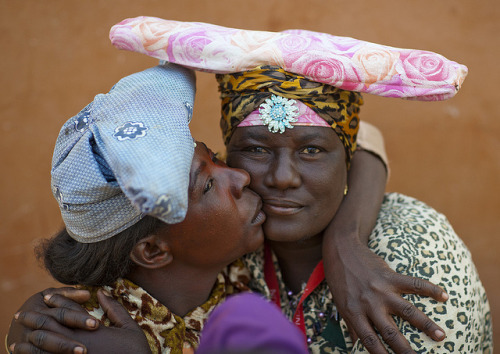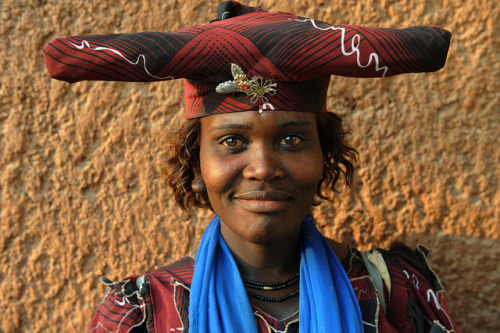The Herero, also known as Ovaherero, are a Bantu ethnic group inhabiting parts of Southern Africa. T
The Herero, also known as Ovaherero, are a Bantu ethnic group inhabiting parts of Southern Africa. The majority reside in Namibia, with the remainder found in Botswana and Angola. There were an estimated 250,000 Herero people in Namibia in 2013. They speak Otjiherero, a Bantu language.Despite sharing a language and pastoral traditions, the Herero are not a homogeneous people. Traditional leather garments are worn by northwestern groups, such as the Himba, Kuvale, and Tjimba, who also conserve pre-colonial traditions in other aspects: for example, they do not buy bedding, but rather sleep in bedding made of cow skin. The Kaokoland Herero and those in Angola have remained isolated and are still pastoral nomads, practising limited horticulture.However, the main Herero group in central Namibia (sometimes called Herero proper) was heavily influenced by Western culture during the colonial period, creating a whole new identity. The dress of the Herero proper, and their southern counterparts the Mbanderu, incorporates and appropriates the styles of clothing worn by their German colonisers. Though the attire was initially forced upon the Herero, it now operates as a new tradition and a point of pride.During the 1904-07 war, Herero warriors would steal and wear the uniforms of German soldiers they had killed, believing that this transferred the dead soldiers’ power to them. Today, on ceremonial occasions, Herero men wear military-style garb, including peaked caps, berets, epaulettes, aiguilettes and gaiters, “to honour the fallen ancestors and to keep the memories alive.”Herero women adopted the floor-length gowns worn by German missionaries in the late 19th century, but now make them in vivid colours and prints. Married and older Herero women wear the dresses, locally known as ohorokova, every day, while younger and unmarried women wear them mainly for special occasions. Ohorokova dresses are high-necked and have voluminous skirts lavishly gathered from a high waist or below the bust, incorporating multiple petticoats and up to ten metres of fabric. The long sleeves display sculptural volume: puffed from the shoulders or frilled at the wrists. Coordinating neckerchiefs are knotted around the neck. For everyday wear, dresses are ingeniously patchworked together from smaller pieces of fabric, which may be salvaged from older garments. Dresses made from a single material are reserved for special occasions.The most distinctive feature of Herero women’s dress is their horizontal horned headdress, the otjikaiva, which is a symbol of respect, worn to pay homage to the cows that have historically sustained the Herero. The headdresses can be formed from rolled-up newspaper covered in fabric. They are made to match or coordinate with dresses, and decorative brooches and pins attached to the centre front. Anthropologist Dr Lutz Marten writes: “A correctly worn long dress induces in the wearer a slow and majestic gait." The overall intended effect is for the woman to resemble a plump, slow-moving cow.2. Listeners at the Herero and Namaqua genocide trial3. Ovambo and Herero -- source link
Tumblr Blog : sartorialadventure.tumblr.com
#fashion#herero#african fashion#africa#namibia#subsaharan africa#headdress
